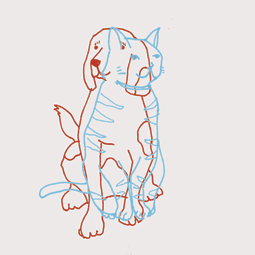


 |
||
 |
||
|
This display uses special glasses that let us examine how the brain reacts when each eye sees a different picture. Usually, both eyes see the same reality. The brain unites the pictures reaching each eye to form a single picture. But when each eye sees a completely different picture, the two images begin to compete with each other. The brain is not able to combine conflicting information that reaches each eye separately. It would not be able to understand the combined picture. Therefore, our perception switches back and forth between the pictures. We can control its direction by focusing our attention on the picture we choose. Competition between two different inputs coming from our eyes is called binocular rivalry. It occurs when the two inputs are so different from each other that the brain interprets both as a meaningful image (rather than merely a scribble, for instance). The brain spontaneously switches between the two perceptions because different populations of neurons are active for each stimulus. When the population that responds to one of the stimuli is active, it represses the activity of the other population, which is why we perceive a single stimulus. But, after a while, the first population of neurons gets "tired," and the population activated by the other stimulus gathers its energy and takes over. Brain researchers are still uncertain exactly how this competition takes place and how the "winning" perception is decided.
|
||

 Tournament of the Eyes: Right vs. Left
Tournament of the Eyes: Right vs. Left